Investing 3,200 billion VND to build industrial parks in Thai Binh and Da Nang; Identity of new contractor at Long Thanh Airport
Investing nearly 1,940 billion VND to develop infrastructure of Hung Phu Industrial Park, Thai Binh Province; Investing more than 1,256 billion VND to build infrastructure of Chau Minh - Bac Ly - Huong Lam Industrial Park...
Those were two of the notable investment news of the past week.
Da Nang increases mineral mine capacity, quenches "thirst" for materials for key projects
Da Nang City has just informed about solutions to ensure the supply of construction materials for state budget capital projects and key projects in the city.
Accordingly, from now until 2025, Da Nang city allows 7 quarries to increase the mining capacity stated in the valid licenses.
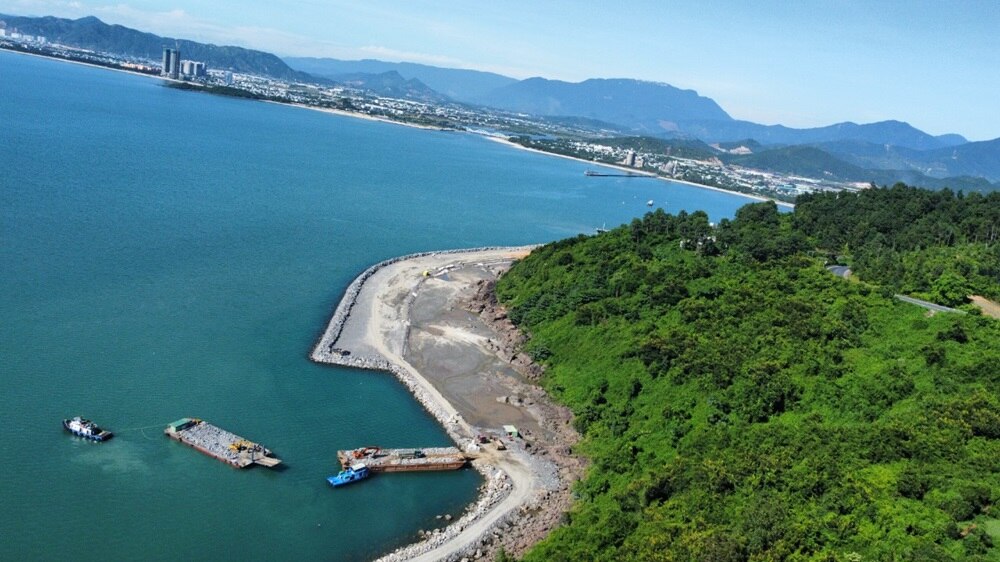 |
| Lien Chieu Port project in Da Nang is speeding up construction progress. |
Da Nang City only considers increasing capacity for mines that are still in operation, the exploited reserves and elevation of the mines after exploitation must not be lower than the elevation at the end of exploitation. Increasing capacity must not exceed 50% of the current capacity of the mines.
Capacity expansion must ensure environmental suitability, meet technical infrastructure requirements, and not affect traffic safety in the mining area and on the transportation route.
Da Nang City noted that the quarries with increased capacity must provide all of the increased mineral capacity to serve the construction of projects using the state budget, key projects in the city such as the Lien Chieu port construction projects, the Hoa Lien-Tuy Loan expressway, the expansion of National Highway 14B, Quang Da bridge, etc.
In 2024, only 7 mines will be allowed to increase their mining capacity to less than 15% of the mineral mining capacity recorded in the valid license, with a total not exceeding 177,000 m3 of finished rock, but must ensure that it does not exceed the permitted boundary and depth.
Regarding the land mine, for the 5 land exploitation licenses in the construction investment project, Da Nang City has calculated the licensing capacity and exploitation time to ensure full exploitation according to the reserves.
Regarding 1 license to exploit soil for filling materials of Da Nang-Central Traffic Construction Joint Stock Company, the hill soil mine at the Phuoc Son mine extension (Hoa Ninh commune, Hoa Vang district) has expired, and the exploitation license is being extended. For this soil mine, Da Nang City will consider increasing the capacity due to remaining reserves for exploitation; the remaining reserves are estimated at nearly 284,000 m3 of monolithic soil/year; the licensed capacity is 200,000 m3 of monolithic soil/year).
In addition, for mines that are in the process of applying for a mineral exploitation license such as Bien Gioi Construction Company Limited, Thai Anh Da Nang Development Construction Company Limited, Da Nang City considers granting a license to increase capacity during the period when the demand for land for leveling to serve key projects increases and reduces the capacity appropriately after the period when the demand for key projects decreases or is no longer there.
In addition, Da Nang City also calculates to allow the extension of the current licensed soil and rock mines, with reserves, in accordance with the planning. Raw materials of soil and rock in the extended mines are only supplied to key projects of the city...
For mines that have been successfully auctioned, the city requires the winning bidder to promptly complete the paperwork to put the mine into operation to serve the city's needs.
Regarding the solution of exploiting the topsoil of 3 quarries as fill material during the exploitation process, including Truong Ban quarry, with remaining topsoil reserves of about 500,000 m3; Phuoc Son quarry, with remaining topsoil reserves of about 370,000 m3 and Ho Mun II expanded quarry, with remaining topsoil reserves of about 250,000 m3, Da Nang City is also inspecting and evaluating to decide on each specific case.
Da Nang City currently has 9 valid licenses for mining stone for common construction materials with a licensed mining capacity of 800,500 m3 of monolithic stone; 6 valid licenses for mining soil for filling materials with a supply volume of 2.468 million m3 of finished filling soil in 2024 and 2025.
It is known that many key projects in Da Nang such as Hoa Lien-Tuy Loan Expressway, National Highway 14B expansion, Quang Da Bridge and access roads, Lien Chieu Port for shared infrastructure... are in great need of soil and rock materials.
Nghe An calls for investment in 2.15 billion USD gas thermal power project
Nghe An Department of Industry and Trade and the Southeast Economic Zone Management Board have organized a meeting with investors to announce and provide information related to the Quynh Lap LNG Thermal Power Project.
Accordingly, the Quynh Lap LNG Thermal Power Project will be implemented in Dong Minh and Dong Thanh villages, Quynh Lap commune, Hoang Mai town, Nghe An province on an area of about 210 - 360 hectares.
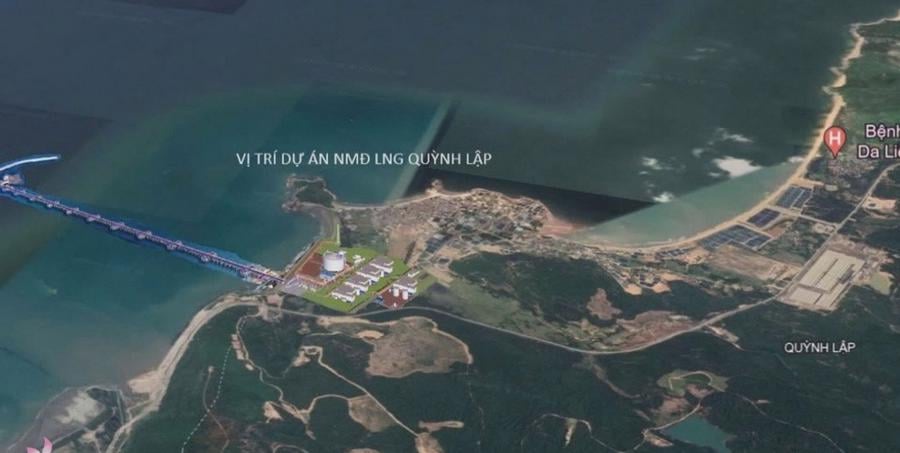 |
| Location of Quynh Lap LNG Thermal Power Project. |
The plant has a capacity of 1,500 MW, with a total investment of about 2.15 billion USD. The scale of the project's construction investment includes the following items: LNG power plant, gas storage, receiving port, breakwater and auxiliary works. The project's LNG demand is about 1.15 million tons/year and the port receives ships with a capacity of about 100,000 DWT.
Quynh Lap LNG Thermal Power Plant is one of the important and priority power source projects in the list attached to Decision No. 500/QD-TTg dated May 15, 2023 of the Prime Minister on approving the National Power Development Plan for the period 2021 - 2030, with a vision to 2050 (Power Plan VIII) and Decision No. 262/QD-TTg dated April 1, 2024 of the Prime Minister on approving the Plan to implement Power Plan VIII. The project is expected to be put into commercial operation before 2030.
Mr. Pham Van Hoa, Director of Nghe An Department of Industry and Trade, said that Nghe An province always creates favorable conditions for interested investors to have the opportunity to access information about the project as well as information about planning related to the project, at the same time, also guides investors to carry out investment procedures in accordance with investment law regulations.
The application submission period starts from September 20, 2024. Interested investors will coordinate with relevant departments and branches to learn and carry out the following procedures. The relevant departments, branches and localities of Nghe An province will create all favorable conditions for administrative procedures for businesses interested in investing.
Investors submit directly or via post to the Nghe An Provincial Public Administration Service Center; address: 16 Truong Thi Street, Truong Thi Ward, Vinh City, Nghe An Province. The deadline for receiving documents is October 5, 2024.
Proposal to build new Phong Chau bridge with public investment capital
The Vietnam Road Administration has just sent an official dispatch requesting the Ministry of Transport to assign the task of preparing a Report proposing investment policy for the Phong Chau Bridge Construction Project on National Highway 32C, Phu Tho province.
According to the State management agency specializing in roads, Phong Chau bridge across Thao river (Red river) at Km18+300 on National Highway 32C, Phu Tho province was built, completed and put into operation in 1995.
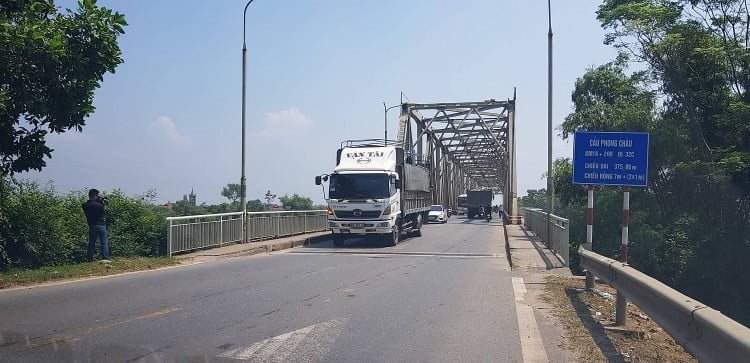 |
| Phong Chau Bridge before the incident of 2 spans collapsing due to floods. |
The bridge is 375.36 m long; includes 08 spans arranged according to the diagram (4×33+66+64+80+21) m; the 33m spans are T-section prestressed reinforced concrete beams, the main spans are made of steel truss structure; the bridge piers are made of reinforced concrete.
On September 9, 2024, Phong Chau bridge collapsed, sweeping away pillar T7 and 2 main spans (spans 6 and 7 on the right bank of Thao river, in Tam Nong district, Phu Tho).
After the incident occurred, the Vietnam Road Administration issued Official Dispatch No. 14/CD-CDuong Bo Viet Nam dated September 9, 2024 directing the Phu Tho Department of Transport and relevant units to urgently mobilize human resources and equipment to participate in troubleshooting and search and rescue.
Implementing the opinions of the Government leaders and the Ministry of Transport at the site inspection of Phong Chau bridge and the proposal of the People's Committee of Phu Tho province, in order to have a long-term solution to ensure traffic safety and meet the transportation needs on National Highway 32C across Thao River (Red River), the Vietnam Road Administration proposed the Ministry of Transport to consider and assign the Vietnam Road Administration the task of preparing a report proposing the investment policy for the new Phong Chau bridge on National Highway 32C, Phu Tho province using the State budget; implementation period 2024-2025.
Previously, in 2022, voters of Phu Tho province proposed that the Ministry of Transport invest in building a new bridge to replace Phong Chau bridge and Phu My bridge (in Tam Nong and Cam Khe districts).
However, due to limited resources, the Ministry of Transport has only acknowledged the above recommendation and continued to direct the Vietnam Road Administration (now the Vietnam Road Administration) to strengthen the maintenance and repair of Phong Chau Bridge and Tu My Bridge from road maintenance funds to ensure traffic safety for people and vehicles participating in traffic on the route.
Quang Tri prepares procedures to deploy National Highway 15D
Vice Chairman of Quang Tri Provincial People's Committee Le Duc Tien recently chaired a meeting to discuss the implementation of the National Highway 15D construction investment project from National Highway 1 to the West branch of Ho Chi Minh Road.
At the meeting, the Quang Tri Province Construction Investment Project Management Board said that the Prime Minister assigned the Quang Tri Provincial People's Committee to be the competent authority to invest in the National Highway 15D construction investment project from National Highway 1 to the West branch of Ho Chi Minh Road under the public-private partnership (PPP) method.
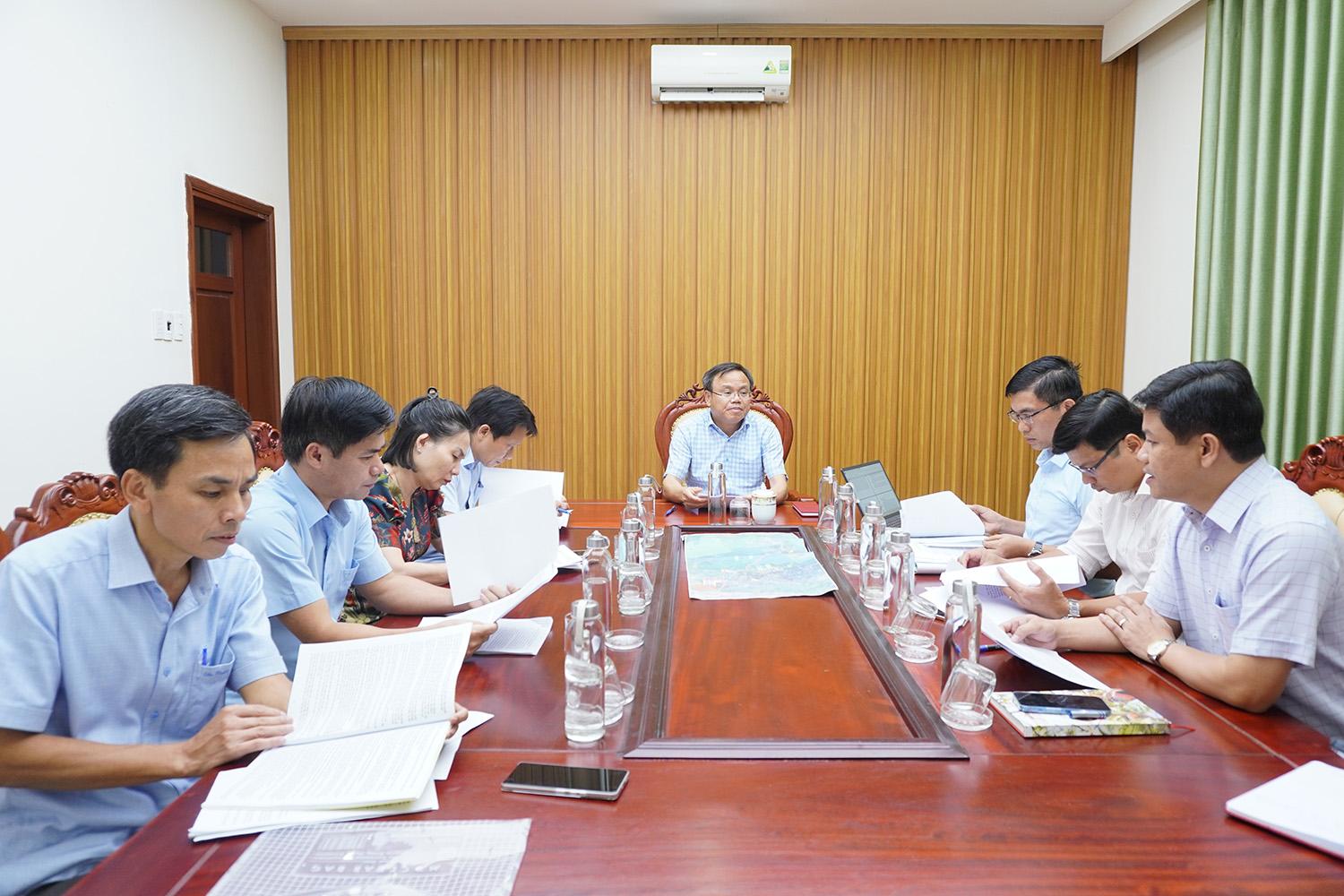 |
| Vice Chairman of Quang Tri Provincial People's Committee Le Duc Tien chaired the meeting. |
The project has a route length of 42 km, including 8 km from National Highway 1 to Cam Lo - La Son Expressway, which has been proposed by Quang Tri province to use central capital in the medium-term public investment plan for the period 2021 - 2025.
Currently, the People's Committee of Quang Tri province has approved the consortium of investors including Hoanh Son Group Joint Stock Company, Nam Tien Company Limited and Phonesack Vietnam Company Limited.
Accordingly, after the survey and research process, the Investor Consortium proposed not to build a tunnel with a scale of 2 lanes, clearing the land for 4 lanes; the project area occupied by protective forest and special-use forest is about 139 hectares.
All project design options pass through special-use and protective forests with areas ranging from 112 to 139 hectares, so the National Assembly or the Government must submit a proposal to change the purpose of forest use.
The total investment for the project according to the plan proposed by the Investor Consortium is expected to be about 4,020 billion VND, of which the state capital participating in the project is about 249 billion VND, but up to now this capital has not been arranged.
To soon deploy the project, at the meeting, Vice Chairman of Quang Tri Provincial People's Committee Le Duc Tien assigned the Department of Transport to preside over and coordinate with relevant departments, branches and sectors to work with the Investor Consortium, guide, evaluate capacity and commitment to implement in order to soon deploy construction of the project.
In addition, Vice Chairman Le Duc Tien assigned the Provincial Construction Investment Project Management Board to study and prepare suitable investment plans and forms; assigned the Department of Transport to preside over and coordinate with departments, branches and units to review and supplement the proportion of state capital participating in the project according to the previous proposal of the Provincial People's Committee with the Ministry of Transport and the Ministry of Planning and Investment.
It is known that according to the Road Network Planning for the period 2021 - 2030, with a vision to 2050 and the Planning of Quang Tri Province for the period 2021 - 2030, with a vision to 2050, National Highway 15D is the main national highway of the Central region, starting at My Thuy port and ending at La Lay border gate, Quang Tri province. The total planned length of National Highway 15D is 78 km, a grade III-IV road, with a cross-section of 2 - 4 lanes.
Regarding the current status, National Highway 15D section from My Thuy beach to National Highway 1, 13.8 km long, has been invested in construction with the scale of a level III plain road and has not been upgraded to a national highway.
The section from National Highway 1 to Cam Lo - La Son Expressway is 8 km long, planned with a cross-section width of 55 m. Currently, National Highway 15D this section has not been invested in construction (there is no existing road).
The section from Cam Lo – La Son Expressway to Ho Chi Minh Road West Branch is 34 km long, planned as a grade III mountainous road, with a 9 m wide roadbed and 8 m wide road surface. The current status of the section has not been invested in construction.
The section going through the middle of Ho Chi Minh road, West branch, is 24 km long, with the current scale of a grade IV mountainous road, 2 lanes with a 7.5 m wide roadbed and 5.5 m wide road surface.
The final section of the route from the West branch of Ho Chi Minh Road to La Lay International Border Gate is 2.2 km long, and has been upgraded by the Ministry of Transport to National Highway 15D. The current status of the route is a level IV and level VI mountainous road, with asphalt concrete surface.
Roadmap for building traffic management and operation centers on 24 highways
The Ministry of Transport has just sent a dispatch to the Prime Minister reporting on the roadmap for building a traffic management and operation center on expressways managed by the ministry until 2025.
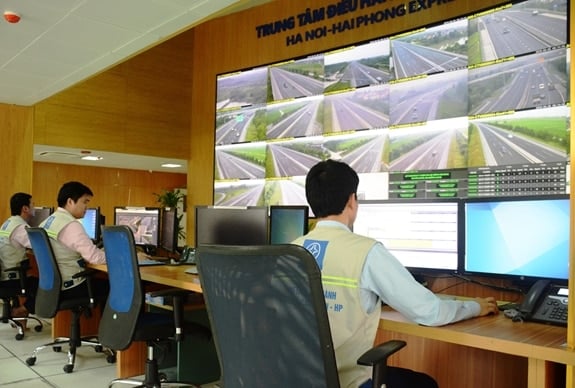 |
| VIDIFI's Hanoi - Hai Phong Expressway Operation Center, which monitors vehicle operations on the route. |
Accordingly, for approved route traffic management centers at expressway projects before the effective date of Decree No. 25/2023/ND-CP dated May 19, 2023 of the Government amending and supplementing Decree No. 32/2014/ND-CP dated April 22, 2014 on management, exploitation and maintenance of expressway works, the Ministry of Transport will immediately implement investment procedures, organize bidding, build intelligent traffic systems and route traffic management centers.
Specifically, 6 sections of the North-South Eastern Expressway in the 2017-2020 period that have been put into operation will deploy 4 traffic management centers from 2024, including: Cao Bo - Mai Son, Mai Son - National Highway 45 (expected to be located within the Mai Son - National Highway 45 section); National Highway 45 - Nghi Son, Nghi Son - Dien Chau (expected to be located within the Nghi Son - Dien Chau section); Vinh Hao - Phan Thiet (expected to be located within the project); Phan Thiet - Dau Giay (expected to be located within the project).
For 18 expressways under investment, the Ministry of Transport proposed that the Prime Minister approve the roadmap for building a traffic management and operation center starting from 2024.
Of these, there are 12 sections of the North-South expressway in the East in the 2021-2025 period, including: Bai Vot - Ham Nghi, Ham Nghi - Vung Ang (expected to be located within the Ham Nghi - Vung Ang section); Vung Ang - Bung, Bung - Van Ninh (expected to be located within the Bung - Van Ninh section); Van Ninh - Cam Lo (expected to be located within the project); Quang Ngai - Hoai Nhon (expected to be located within the project); Hoai Nhon - Quy Nhon (expected to be located within the project); Quy Nhon - Chi Thanh, Chi Thanh - Van Phong (expected to be located within the Quy Nhon - Chi Thanh section); Van Phong - Nha Trang (expected to be located within the project); Can Tho - Hau Giang, Hau Giang - Ca Mau (expected to be located within the Hau Giang - Ca Mau route).
Six other expressway sections also have a roadmap to build a traffic management center starting from 2024, including: Khanh Hoa - Buon Ma Thuot (expected to be located within the project); Bien Hoa - Vung Tau (expected to be located within the project); My Thuan - Can Tho, including My Thuan 2 bridge and Can Tho 2 bridge (expected to be located within the project); Cam Lo - La Son, La Son - Tuy Loan (expected to be located in a common center); Dau Giay - Tan Phu (expected to be located within the project).
For the expressway sections that are being prepared for investment, the Ministry of Transport recommends that the Prime Minister assign the Ministry of Transport to organize the investment in building a traffic management center in accordance with the project construction investment progress, ensuring synchronous operation when the expressway is put into operation.
It is known that the intelligent transportation system (ITS) and the route traffic management and operation center are part of the highway project, aiming to optimize the management and exploitation efficiency of road infrastructure, ensuring smooth, safe, efficient, timely, convenient and environmentally friendly traffic.
In Decision No. 923/QD-TTg dated June 30, 2020 of the Prime Minister on approving the project "Application of information technology in traffic management and operation, focusing on the road sector", the goal is that by 2025, 100% of expressways will have ITS systems installed; forming integrated centers for traffic management and operation of smart cities in centrally run cities and localities in need.
Currently, the ITS system has been invested in 11/35 expressway sections with 12 traffic management centers, supporting the management and operation of 645 km/2,021 km of expressway in operation.
For the Project to build some expressway sections on the North-South Eastern route in the period of 2017-2020, the Ministry of Transport plans to invest in 7 route traffic management centers for 9 component projects (for 3 PPP component projects, invest in separate route traffic management centers; for 6 public investment component projects, arrange 4 route traffic management centers).
Of which, 3 component projects invested under the PPP method have been deployed to invest in the Intelligent Traffic System under the PPP Contract, ensuring synchronization in the process of management and operation; the public investment component projects are completing investment procedures to build the ITS system and the route traffic management and operation center.
Proposal to reserve "special" procedures for high-tech investment projects
The Ministry of Planning and Investment proposes to give high-tech investment projects special investment procedures with simplified procedures, licensing within 15 days.
This new issue is raised in the Draft Law amending and supplementing a number of articles of the Law on Planning, the Law on Investment, the Law on Investment under the public-private partnership model, and the Law on Bidding, which the Ministry of Planning and Investment consulted on the afternoon of September 11 in Ho Chi Minh City.
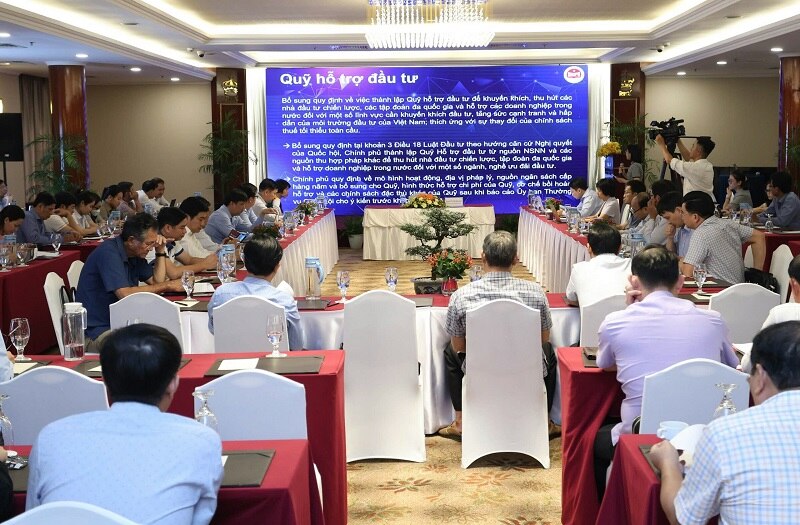 |
| The Ministry of Planning and Investment proposed many new points in the Draft amending and supplementing a number of articles of the Investment Law. |
Regarding the amendment of the Investment Law, the Ministry of Planning and Investment proposed three new policies related to investment.
Firstly, the Ministry of Planning and Investment proposed to promote the decentralization of investment policy approval to the provincial People's Committees. In particular, the Prime Minister's authority to approve investment policies to the provincial People's Committees for projects on construction and business of infrastructure of industrial parks; investment projects on construction of new ports and port areas with an investment capital of VND 2,300 billion or less belonging to special seaports.
This decentralization aims to continue reforming administrative procedures, promoting decentralization of state management to localities, simplifying investment processes and procedures, creating favorable conditions to ensure project implementation progress, at the same time, enhancing the effectiveness and efficiency of state management, increasing the initiative and self-responsibility of localities; and limiting the number of projects that must be submitted to the Prime Minister.
The second is to supplement regulations on the establishment of Investment Support Funds and amend regulations on the termination of investment projects.
In the Draft Amendment to a number of articles of the Investment Law, the Ministry of Planning and Investment proposed to add regulations on the establishment of an Investment Support Fund to encourage and attract strategic investors, multinational corporations and support domestic enterprises in a number of fields that need investment encouragement, increase the competitiveness and attractiveness of Vietnam's investment environment and adapt to changes in global minimum tax policies.
Regarding project termination, add point a1 after point a, clause 2, Article 48 to stipulate that the investment registration agency shall terminate or partially terminate the investment project's activities in the case that after 12 months from the date of completion of progress at the office
investment policy approval
The amendment aims to create a clear legal basis, consistent with practice, to terminate activities for projects that have not been implemented for many years, causing land waste, contributing to freeing up resources to promote economic and social development.
Third, the latest issue proposed to be added to the Investment Law is special investment procedures for high-tech projects (research and development centers; semiconductors, chips, new technology batteries), investment in industrial parks, export processing zones, high-tech zones and functional areas in economic zones.
Regarding special investment procedures, the proposal is sent to the Management Board of industrial parks, export processing zones, high-tech zones, and economic zones. Within 15 days from the date of receiving the dossier, the Management Board of industrial parks, export processing zones, high-tech zones, etc. will issue an investment registration certificate.
The Ministry of Planning and Investment also proposed that investment projects registered under special procedures do not have to carry out procedures to obtain licenses, approvals, consents, permits, confirmations and other requirements in the fields of construction, environmental protection, technology transfer, fire prevention and fighting.
Investors are responsible for fully implementing commitments in accordance with requirements on technical standards and regulations as prescribed by law on construction, environmental protection, technology transfer, fire prevention and fighting.
Ms. Vu Thi Chau Quynh, Deputy Director of the Legal Department of the Ministry of Planning and Investment, said that this regulation is highly feasible because these are narrow sectors that can only be implemented at the Management Boards of industrial parks and export processing zones where land is available, wastewater treatment systems are available, and fire prevention and fighting systems are available.
Proposal to expand National Highway 1 and Ho Chi Minh Road from Ca Mau City to Dat Mui
The People's Committee of Ca Mau province has just sent an official dispatch to the Ministry of Transport regarding the implementation of the projects to upgrade and expand National Highway 1 and Ho Chi Minh Road from Ca Mau City to Dat Mui.
Accordingly, the People's Committee of Ca Mau province proposed the Ministry of Transport to consider and report to the Prime Minister to assign the Ministry of Transport to continue implementing the projects to upgrade and expand National Highway 1 and Ho Chi Minh Road from Ca Mau City to Dat Mui and prioritize balancing and allocating capital sources for early implementation in the period 2021 - 2025.
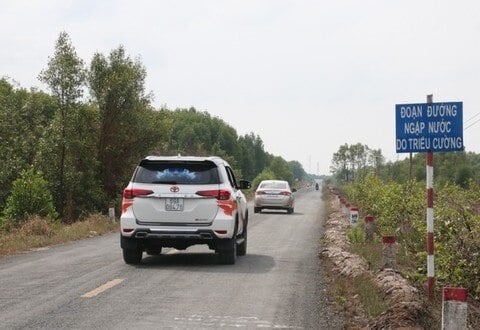 |
| A section of Ho Chi Minh road, Nam Can - Dat Mui section. |
"The People's Committee of Ca Mau province will focus on site clearance work to ensure progress requirements and coordinate work according to local authority and responsibility," Mr. Lam Van Bi, Vice Chairman of the People's Committee of Ca Mau province, committed.
It is known that National Highway 1 from Ca Mau City to Nam Can together with Ho Chi Minh Road section Nam Can - Dat Mui is the vital and only route from Ca Mau City to large urban areas and economic centers such as Nam Can urban area, Nam Can Economic Zone, connecting by road to Ca Mau Cape - the sacred southernmost point of the Fatherland.
This is a backbone route, playing a very important role in the local socio-economic development, ensuring national defense and security, and strongly promoting the potential development of the Ca Mau Cape National Tourist Area.
However, the current state of National Highway 1 and Ho Chi Minh Road is still narrow. National Highway 1 is mostly of the scale of a class IV road, with 2 lanes; Ho Chi Minh Road is mostly of the scale equivalent to a class V road, with only 2 limited lanes (not yet 2 standard lanes).
Meanwhile, traffic volume on the route is very high and constantly increasing rapidly, concentrating many heavy-duty vehicles, often causing traffic congestion and unsafe traffic, leading to difficulties for the locality in attracting investment in economic centers such as Hon Khoai Seaport, Nam Can Economic Zone and attracting tourists to Ca Mau Cape.
The leader of the People's Committee of Ca Mau province said that this is also a major bottleneck for a province with many difficulties like Ca Mau to develop its economy and society.
It is known that the preparation of investment proposal documents (Investment proposal report/Pre-feasibility study report) for the projects to upgrade and expand National Highway 1 and Ho Chi Minh Road from Ca Mau City to Dat Mui, including: Project to upgrade and expand National Highway 1 from Ca Mau City to Nam Can; Project to upgrade and expand Ho Chi Minh Road from Nam Can to Dat Mui, has been assigned by the Ministry of Transport to the Ho Chi Minh Road Project Management Board.
The Ho Chi Minh Road Project Management Board has also completed the documents and submitted them to the Ministry of Transport for consideration. However, due to funding difficulties, the projects have not yet been approved for investment.
According to the report of the Ho Chi Minh Road Project Management Board, the projects to upgrade and expand National Highway 1 and Ho Chi Minh Road from Ca Mau City to Dat Mui are expected to be of Group A scale, with a total investment of nearly 10,000 billion VND, a large total route length (about 106km), and quite complicated technical solutions, especially the treatment of weak soil. Meanwhile, Ca Mau province has no experience as the managing agency for projects of similar scale and nature.
“Therefore, the Ministry of Transport’s continued implementation of the projects to upgrade and expand National Highway 1 and Ho Chi Minh Road from Ca Mau City to Dat Mui will be in accordance with legal regulations and the actual situation, ensuring convenience and speeding up progress,” the leader of the People’s Committee of Ca Mau province assessed.
Amending the PPP Investment Law will remove bottlenecks for BT projects
On the afternoon of September 11, in Ho Chi Minh City, the Ministry of Planning and Investment held a conference to collect comments on the Draft Law amending and supplementing a number of articles of the Law on Planning, the Law on Investment, the Law on Investment under the Public-Private Partnership (PPP) model, and the Law on Bidding.
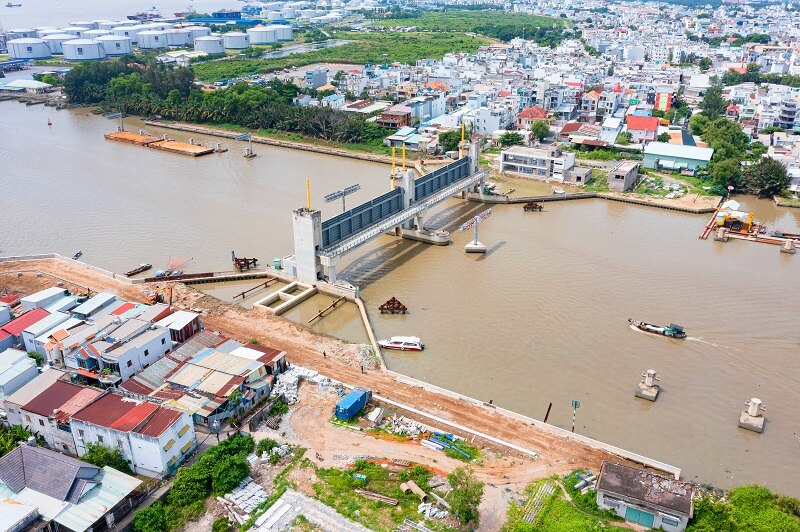 |
| The project to solve tidal flooding in Ho Chi Minh City area takes into account climate change factors, phase I has stopped construction since 2020 until now due to unpaid BT land fund - Photo: TN |
The content that has received the most attention from localities is to include in the Draft the continued application of BT contracts with cash payments and land fund payments in the direction of comprehensive innovation in the implementation and payment methods for investors to overcome the maximum shortcomings and difficulties in implementing this type of contract such as: the total investment must be accurately determined, avoiding inflated project values; bidding must be organized to select investors; the payment mechanism for investors must be specifically and transparently determined right from the project establishment stage.
The draft also clarifies the procedures for using public investment capital to pay investors in case of compensation or early termination of contracts. It also adds sources of payment capital to share risks with PPP project enterprises, including: medium-term and annual public investment plan reserves; and increases annual State budget revenue for development investment expenditure.
The Draft also provides regulations to completely resolve difficulties and obstacles for transitional BOT and BT projects. In particular, it allows the application of the PPP Law in cases where contracts are signed before the PPP Law takes effect and there are no regulations to adjust issues arising during project implementation.
At the same time, the Draft also specifically stipulates how to handle BT project contracts with contents that are not in accordance with the provisions of law at the time of signing the contract based on the conclusions of state inspection and audit agencies to ensure the final handling of transitional BT projects, contributing to clearing the backlog of land resources in these projects.
With the regulations set forth in the Draft, Mr. Quach Ngoc Tuan, Deputy Director of the Department of Planning and Investment of Ho Chi Minh City, strongly agrees with these contents and believes that if approved by the National Assembly, it will remove many obstacles encountered in the process of implementing BT projects.
Because in reality, Ho Chi Minh City has many BT projects that have been stuck for many years and have not been resolved. Among them, we must mention the Project to solve flooding caused by tides in the Ho Chi Minh City area taking into account climate change factors, phase I, with an investment of nearly 10,000 billion VND.
This project is stuck in paying land fund to investors, leading to the project stopping construction from 2020 until now, the payment has not been resolved for investors to complete the project.
In addition, Ho Chi Minh City also has 2.7 km of Belt Road 2 invested in the form of BT, which has been congested since 2027 and has not yet paid the investor.
Similarly, the Phan Dinh Phung Stadium Project also encountered difficulties in paying land funds to investors. Recently, the Ho Chi Minh City People's Committee decided to end the BT investment form and switch to public investment form.
From the difficulties that Ho Chi Minh City is facing, Mr. Quach Ngoc Tuan suggested that for BT contracts paid by land, it should be stipulated that only when there is land fund can the investor be selected to avoid the case of selecting the investor but having no land to pay.
At the same time, it is necessary to specify the time to determine land price as public property to pay for BT projects. If not clearly specified, investors and authorities will have different views, leading to failure to implement.
In addition, Mr. Tuan also recommended that during the implementation of the BT project, if there is an increase in project costs that is not the investor's fault, it is necessary to clearly stipulate how to pay for these additional costs, the type of assets to be paid, and the time of payment?
Revealing investment capital for Hanoi metro line, Hanoi station - Hoang Mai section
On September 11, within the framework of the press conference with the theme "France's experience in supporting sustainable transport in Vietnam", the French Embassy provided information related to urban railway line No. 3, Hanoi City.
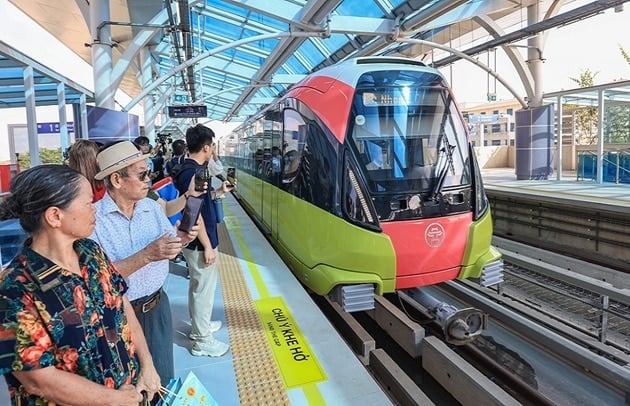 |
| People in the capital are eager to experience the Nhon - Hanoi station metro line in the first days of commercial operation. |
According to the French Embassy, the elevated section of Hanoi railway line No. 3 (including 8 stations) was put into commercial operation on August 8, 2024.
The elevated section connecting Nhon to Cau Giay with a length of 8 km by means of transport ensures the environment and reduces congestion for the capital Hanoi. The underground section (next 4 stations to Hanoi station) will be operated by the end of 2027.
It is known that the Hanoi City Pilot Urban Railway Investment Project, Nhon - Hanoi Station section, designated as Line 3.1, is funded by ODA loans from 4 sponsors (French Government; French Development Agency; European Investment Bank and Asian Development Bank) and counterpart funds from Hanoi City Budget.
The project runs on dedicated tracks with a total main line length of 12.5 km, of which the elevated section is 8.5 km long and the underground section is about 4 km with a double-gauge railway of 1,435 m. The station system of the project includes 8 elevated stations (S1 to S8 station) and 4 underground stations (S9 to S12 station).
The means of transport includes locomotives and rolling stock of the “medium” size; type B (according to European standards) with a width of 2.75-3 m; the length of the train is about 80 m (for a 4-car train), about 100 m (for a 5-car train). The number of cars of the train according to the investment phase is from 4 cars to 5 cars/train.
Mr. Oliver Brochet, French Ambassador to Vietnam, said that the inauguration of the elevated section of the Nhon - Hanoi Railway Station urban railway line has demonstrated the capacity of the entire French - Vietnamese team in successfully implementing ambitious infrastructure projects in the field of rail transport. This also demonstrates France's commitment to accompanying Vietnam in the transition towards a carbon-free economy, especially through the provision of technical solutions that meet the highest international standards.
The French Embassy representative said that the urban railway line No. 3 will be extended, continuing to go underground under Tran Hung Dao street and down to the South of Hanoi to Hoang Mai with about 8 km underground.
This extension will be financially supported by European donors such as the French Development Agency, the European Investment Bank, and the Asian Development Bank.
According to the Hanoi Urban Railway Development Project, which is being consulted by ministries, branches and relevant agencies, urban railway line No. 3: Troi - Nhon - Yen So has a length of 57.3 km. This is the longest urban railway line in the capital among the total of 15 urban railway lines planned to be deployed in the period up to 2035.
The route is divided into 3 segments, of which section 3.1: Nhon - Hanoi station is under construction; section 3.2: Hanoi station - Hoang Mai is 8.8 km long, mainly underground.
From the starting point of Hanoi station, line 3.2 will go to the following stations: Tran Hung Dao, Tran Thanh Tong, Kim Nguu, Tam Trinh, Yen So. The total construction cost of line 3.2 is estimated at about 1.753 billion USD.
Route 3.3: Nhon – Troi and extension to Son Tay will follow the direction of Nhon – Highway 32 – Son Tay with a length of about 36 km. Route 3.3 is completely elevated with about 14 stations. The construction cost of Route 3.3 is estimated at about 2.88 billion USD.
Information on the scale of investment in construction of 15 urban railway lines in Hanoi Capital
In the Master Plan for Investment in the Capital's Urban Railway System, the Hanoi People's Committee said that there are 10 urban railway lines mentioned in the Hanoi Capital Transport Planning to 2030, with a vision to 2050 (Plan 519) and updated according to current research. These urban railway lines have a total length of 397.8 km, including:
Urban railway line No. 1 : Ngoc Hoi - Yen Vien - Nhu Quynh has a length of 38.6 km, including 20 stations, with a total investment of 2.895 billion USD. Urban railway line No. 1 is divided into 2 segments.
The Ngoc Hoi – Yen Vien section follows the Ngoc Hoi – Hanoi central station – Gia Lam – Yen Vien route, 28.6 km long, completely elevated with 15 stations.
The Gia Lam – Duong Xa section follows the Gia Lam – Nguyen Van Linh – Ngoc Thuy route, 10 km long, completely elevated with 5 stations.
Urban railway line No. 2 : Noi Bai – Thuong Dinh – Buoi has a length of 47.3 km, including 33 stations, with a total investment of 5.735 billion USD. The line is divided into 4 segments.
The Nam Thang Long – Tran Hung Dao section is 11.5 km long, of which the elevated section is 8.9 km long and the underground section is 2.6 km long; including 10 stations; following the Nam Thang Long – Nguyen Van Huyen – Thuy Khe – Phan Dinh Phung – Hang Bai axis.
The 5.9 km long Tran Hung Dao – Thuong Dinh section is completely elevated; includes 6 stations; follows the axis of Hang Bai – Pho Hue – Dai Co Viet – Chua Boc – Tay Son – Thuong Dinh.
The Nam Thang Long – Noi Bai section is 19.7 km long, including 15.6 km elevated and 4.1 km underground; including 12 stations; the route follows the Nam Thang Long – Phu Thuong – Vo Nguyen Giap – Noi Bai axis.
The 33 km extension to Soc Son is completely elevated and includes 12 stations.
Urban railway line No. 2A: Cat Linh – Ha Dong – Xuan Mai is 33 km long, including 12 stations, with a total investment of 1.777 billion USD. The line is divided into 2 segments.
The Cat Linh – Ha Dong section (completed, put into operation from November 6, 2021) is 13 km long, completely elevated; includes 12 stations.
The extended section to Xuan Mai is 20 km long, completely elevated; includes 12 stations; the route follows the Yen Nghia - National Highway 6 - Xuan Mai axis.
Urban railway line No. 3: Troi – Nhon – Yen So station has a length of 57.3 km; includes 33 stations; total investment of 6.106 billion USD. The line is divided into 3 segments.
The Nhon – Hanoi station section is 12.5 km long, of which the elevated section is 8.5 km long and the underground section is 4 km long; including 12 stations; the route follows the Nhon – Cau Dien – Ho Tung Mau – Xuan Thuy – Cau Giay – Kim Ma – Cat Linh – Hanoi station axis.
The Hanoi – Yen So (Hoang Mai) station section is 8.8 km long, completely underground; includes 7 stations; the route follows the axis of Hanoi station – Tran Hung Dao – Tran Thanh Tong – Kim Nguu – Tam Trinh – Yen So.
The Nhon – Troi section and extension to Son Tay is 36 km long, completely elevated; includes 14 stations; the route follows the Nhon – National Highway 32 – Son Tay axis.
Urban railway line No. 4: Me Linh - Sai Dong - Lien Ha has a length of 54 km, including 41 km of elevated line and 13 km of underground line; including 41 stations; total investment of 4.957 billion USD; the line follows the axis of Me Linh - Dong Anh - Sai Dong - Vinh Tuy - Ring Road 2.5 - Co Nhue - Lien Ha.
Urban railway line No. 5 : Van Cao - Hoa Lac has a length of 38.4 km, including 31.9 km above ground and 6.5 km underground; includes 20 stations; total investment of 4.957 billion USD; the route follows the axis of Van Cao - Ngoc Khanh - Tran Duy Hung - Thang Long Boulevard - Ring Road 4 - Hoa Lac.
Urban railway line No. 6: Noi Bai - Ngoc Hoi is 43 km long, running entirely on high ground; including 29 stations; total investment of 2.408 billion USD; the route follows the Noi Bai - Phu Dien - Ha Dong - Ngoc Hoi axis.
Urban railway line No. 7: Me Linh – Ha Dong is 28 km long, running entirely on elevated lines; including 23 stations; total investment of 2.408 billion USD; the route follows the axis of Me Linh – Nhon New Urban Area – Van Canh – Duong Noi.
Urban railway line No. 8: Son Dong – Mai Dich – Ring Road 3 – Linh Nam – Duong Xa has a length of 39.2 km; of which the elevated section is 24.2 km long and the underground section is 15 km long; including 26 stations; total investment is 5.944 billion USD; the route follows the axis of Son Dong – Mai Dich – Ring Road 3 – Linh Nam – Duong Xa.
The route connecting satellite cities: Son Tay - Hoa Lac - Xuan Mai is 32 km long, completely elevated; includes 10 stations; total investment of 2.752 billion USD; the route follows the axis of Son Tay - National Highway 21 - Hoa Lac - Xuan Mai.
In addition to the 10 urban railway lines mentioned above, the Hanoi People's Committee is studying to add 5 more railway lines according to the Capital Planning and the Capital Master Planning, including:
Urban railway line 1A: Ngoc Hoi - 2nd Airport in the South has a length of 29 km including 27 km above ground and 2 km underground; includes 10 stations; total investment of 2.365 billion USD; the route follows Ngoc Hoi axis - Ngoc Hoi road - Phu Xuyen - 2nd Airport in the South.
Urban railway line No. 9 : Me Linh – Co Loa – Duong Xa has a length of 48 km; runs entirely on elevated lines; includes 24 stations; total investment of 3.84 billion USD; the route follows the Me Linh – Co Loa – Yen Vien – Duong Xa axis.
Urban railway line No. 10: Cat Linh – Lang Ha – Le Van Luong – Yen Nghia has a length of 12 km including 8 km elevated and 4 km underground; 12 stations; total investment of 1.32 billion USD; the route follows the axis Cat Linh – Lang Ha – Le Van Luong – To Huu – Nguyen Thanh Binh – Yen Nghia.
Urban railway line No. 11: Ring Road 2 - Southern Axis - 2nd Southern Airport has a length of 42 km, including 33 km elevated and 9 km underground; including 16 stations; total investment of 4.17 billion USD; the route follows the Ring Road 2 - Hanoi - Xuan Mai Road - Southern Axis - 2nd Southern Airport.
Urban railway line No. 12: Xuan Mai – Phu Xuyen has a length of 45 km; runs entirely on elevated lines; includes 18 stations; total investment of 3.87 billion USD; the route follows the axis of Xuan Mai – National Highway 21 – North-South axis – Do Xa Quan Son – Phu Xuyen road.
Route 1: the section extending from Duong Xa to Lac Dao (not yet considered for investment): the route follows the Gia Lam - Nguyen Van Linh - Phu Thuy - Nhu Quynh - Lac Dao axis.
Line 2: Adjusted section from Tran Hung Dao - Cho Mo - Nga Tu So - Hoang Quoc Viet with a length of 6.7 km; completely underground; includes 6 stations; total investment of 1.139 billion USD.
Line 7 : Me Linh – Noi Bai section is 18 km long; completely elevated; includes 12 stations; total investment is 1.548 billion USD; the route follows the Me Linh – Quang Minh – Thanh Xuan – Noi Bai axis.
Vinh Long: Investing 140 billion VND to upgrade traffic roads in Binh Minh town
On September 12, the People's Committee of Vinh Long province issued Decision No. 1786/QD-UBND approving the Project to upgrade and expand Phan Van Nam Street (section from 3/2 Street to Nguyen Van Thanh Street) in Cai Von Ward, Binh Minh Town.
The project investment scale includes upgrading and expanding the existing road with a length of about 1,054 m; road surface width of 9 m, sidewalk width of 2 x 3 = 6 m; finished elevation at the road edge is +2.63 m; axle load of 10 tons. In addition, there is a drainage system, lighting system, trees along both sides of the sidewalk...
The Project's investment objective is to serve people's travel, ensure the transportation of goods, develop traffic infrastructure, synchronize with regional technical infrastructure, create conditions to help localities complete traffic criteria in new rural construction, and promote local socio-economic development.
The project has a total investment of nearly 140 billion VND. Of which, the provincial budget supports construction costs and compensation, support and resettlement costs (about 110 billion VND); the remaining part uses the budget of Binh Minh town.
Project implementation progress 2023 - 2026.
The People's Committee of Vinh Long province assigned the People's Committee of Binh Minh town to direct the Binh Minh town Construction Investment Project Management Board (investor) to implement the project in accordance with current state regulations.
Contractor found for construction package worth over 6,000 billion VND at Long Thanh airport
Package No. 4.7 "Construction and installation of equipment for aircraft parking lots, passenger terminals and other works" belonged to the consortium led by the Aviation Construction Corporation.
The Chairman of the Board of Directors of Airports Corporation of Vietnam (ACV) has just signed Decision No. 3828/QD – TCTCHKVN approving the results of contractor selection for Package No. 4.7 “Construction and installation of equipment for aircraft parking lots, passenger terminals and other works of Component Project 3 of the Long Thanh International Airport Construction Investment Project Phase 1.
Accordingly, the winning contractor is the Joint Venture of Aviation Construction Corporation (ACC) - Truong Son Construction Corporation - Vietnam Construction and Import-Export Joint Stock Corporation - Vietnam Construction Investment Development Joint Stock Company - Cienco4 Group Joint Stock Company - Six Four Seven Aviation Construction Joint Stock Company.
The winning bid price is 6,267,991 billion VND (bid package price 6,368,224 billion VND), achieving a savings rate of 1.6%; the contract implementation period is 23 months, 2 months shorter than the bidding schedule of 25 months. The above time does not include force majeure and contract implementation period extension (if any). The contract is based on fixed unit price and adjustable unit price.
Recently, ACV leaders said that the project will complete the construction of the entire reinforced concrete structure by September 2024. The terminal construction will be completed before 2025, and the facade will be installed before March 2026. In parallel with the completion work, the contractor will install equipment for trial operation from the beginning of 2026, striving to put the terminal into operation before August 31, 2026, welcoming the first commercial flight on September 2, 2026.
In addition to the progress of the bid packages being guaranteed, ACV is petitioning the National Assembly to allow the construction of runway number 2 and to carry out leveling of the T3 terminal area to avoid "dust dispersion" when the airport is in operation.
Binh Dinh establishes new industrial cluster of more than 18 hectares to serve business relocation
The People's Committee of Binh Dinh province has just approved the investment policy for the Project on Construction and Business of Technical Infrastructure of Bui Thi Xuan Industrial Cluster (expansion, referred to as the Bui Thi Xuan Industrial Cluster Expansion Project).
Accordingly, the form of investor selection is prescribed in Clause 2, Article 13, Decree No. 32/2024/ND-CP, dated March 15, 2024 of the Government on management and development of industrial clusters and Decision No. 2259, dated June 25, 2024 of the People's Committee of Binh Dinh province on promulgating the Regulation on criteria for selecting investors to register to implement the Project of Construction and business of technical infrastructure of industrial clusters in the province.
The Bui Thi Xuan Industrial Park expansion project has an area of over 18.3 hectares, of which industrial production land is over 12.7 hectares, implemented in area 8, Bui Thi Xuan ward, Quy Nhon city. Completion time within 36 months.
The project has a total estimated investment of VND85.32 billion, including implementation costs of VND71.82 billion. The main investment items of the project include leveling the ground; construction of internal traffic systems; water supply and drainage systems; wastewater collection and treatment systems; power supply systems; and trees.
According to the People's Committee of Binh Dinh province, in addition to attracting investment from small and medium enterprises, cooperatives, and production facilities; the project's goal is to prioritize and create land funds to relocate enterprises and production facilities currently operating in Quang Trung Industrial Cluster and Nhon Binh Industrial Cluster (CCN) to concentrated production at the expanded Bui Thi Xuan Industrial Cluster.
Previously, on March 20, 2024, the People's Committee of Binh Dinh province decided on the relocation location of 3 operating industrial clusters.
Accordingly, enterprises and production facilities in Quang Trung Industrial Park and Nhon Binh Industrial Park will relocate to Bui Thi Xuan Industrial Park; enterprises and production facilities providing warehouse services will relocate to the concentrated warehouse area according to the province's planning. Enterprises and production facilities in Go Da Trang Industrial Park will relocate to Tan Duc Industrial Park (expansion).
At the same time, relocated businesses will be supported with 7 years of infrastructure rental fees at the new location for the area corresponding to the recovered area at the old location.
In addition, businesses and establishments in operation that relocate, hand over land, assets and receive premises at the new location 12 months in advance will receive State support for costs according to the leased area with a support level of less than 1,000 m2, a one-time support of 400 million VND; from 1,000 m2 to less than 10,000 m2, a one-time support of 500 million VND; from 10,000 m2 or more, a one-time support of 600 million VND...
For economic organizations, enterprises, production and business establishments whose land lease term at the above 3 industrial parks has expired, they will not receive support; if they relocate and hand over the site to the State 12 months in advance, they will receive a bonus of 100 million VND for each unit to accelerate the site clearance progress.
Scatec ASA sells Dam Nai Wind Farm in Ninh Thuan
Sustainable Asia Renewable Assets (SARA) is a renewable energy platform of the SUSI Asia Energy Transition Fund (SAETF), according to a press release on the website https://scatec.com/. Scatec will receive an upfront payment of $27 million for its 100% stake upon completion of the transaction. An additional $13 million may be received subject to certain conditions being met by May 2026.
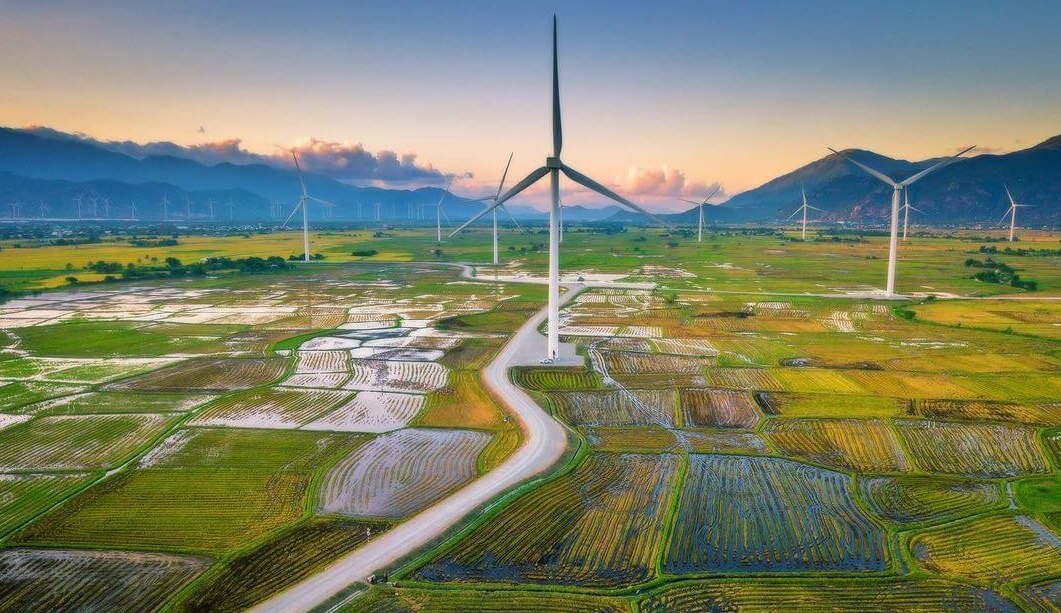 |
| Dam Nai Wind Farm is a check-in spot loved by young people in Ninh Thuan. Photo: collected |
“We have decided to exit Vietnam after operating the Dam Nai Wind Farm since its acquisition from SN Power in 2021. We are satisfied with the agreed price and the sale of this asset is consistent with our strategy to optimize our portfolio and focus on markets where we see more attractive growth opportunities.
We are confident that SUSI will continue to contribute to Vietnam’s renewable energy journey. We would like to thank our local team for their contributions over the years, as well as our partners, government stakeholders and lenders,” said Terje Pilskog, CEO of Scater.
Total interest-bearing net debt related to the Dam Nai Wind Farm is approximately $28 million at the end of the second quarter of 2024, representing an enterprise value of up to $68 million, including the contingent income payment. The wind farm has also generated additional cash flows to equity for Scatec of approximately $14 million since its acquisition in 2021.
The transaction is expected to close in the first half of 2025, subject to customary regulatory approvals. At the Scatec Group level, the transaction is estimated to generate a gain on a consolidated basis of approximately $8 million.
Dam Nai Wind Power Plant is located in Ninh Thuan province, including 15 Siemens wind turbine generators with a total capacity of 39 MW.
Dam Nai Wind Power Joint Stock Company became a 100% owned subsidiary of Scatec when Scatec Solar Netherlands BV acquired SN Power Vietnam Renewables BV in May 2021.
Scatec is a leading provider of renewable energy solutions. Scatec has 4,221 MW under management and is constructing 462 MW.
Amending a number of Decrees detailing investment under the PPP method
Deputy Prime Minister Tran Hong Ha has just given instructions on the drafting of a Decree amending and supplementing a number of Decrees detailing and guiding the implementation of the Law on Investment under the public-private partnership model.
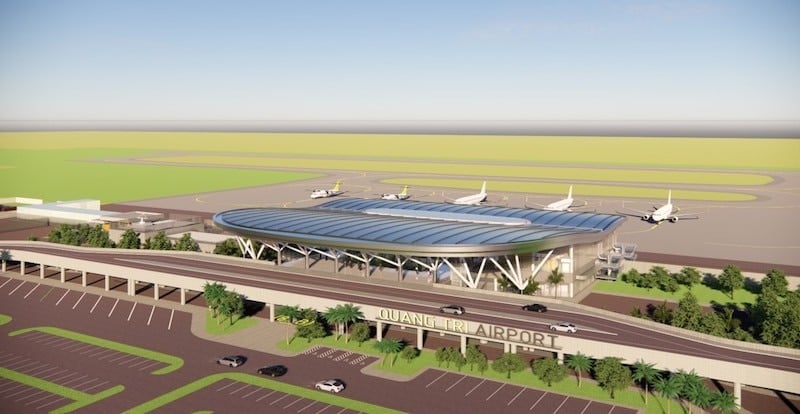 |
| Quang Tri Airport - a project invested under the PPP method. |
Official dispatch No. 6549/VPCP-CN dated September 13, 2024 of the Government Office stated: Considering the proposal of the Ministry of Planning and Investment on the development of a Law amending and supplementing a number of articles of the Law on Investment under the public-private partnership (PPP) method and the Ministry of Finance on the proposal to amend and supplement a number of articles of the Decree detailing and guiding the implementation of the Law on Investment under the PPP method, Deputy Prime Minister Tran Hong Ha agreed with the proposal of the Ministry of Planning and Investment on the development of Decrees amending Decree No. 35/2021/ND-CP dated March 29, 2021 of the Government and Decree No. 28/2021/ND-CP dated March 26, 2021 of the Government at the same time as the process of developing and perfecting the contents of the Law amending and supplementing a number of articles of the Law on Planning, the Law on Investment, the Law on Investment under the PPP method and the Law on Bidding.
The Ministry of Finance closely coordinates with the Ministry of Planning and Investment in the process of developing and perfecting the contents of the Law amending and supplementing a number of articles of the Law on Planning, the Law on Investment, the Law on Investment under the PPP method and the Law on Bidding to ensure the resolution of difficulties and problems related to BT contracts as reported by the Ministry of Finance; continue to review and study the amendments to Decree No. 69/2019/ND-CP dated August 15, 2019 of the Government to resolve difficulties and problems related to BT contracts under the authority of the Government, at the same time as the process of developing and perfecting the Law amending and supplementing a number of articles of the Law on Planning, the Law on Investment, the Law on Investment under the PPP method and the Law on Bidding.
The Law on Investment under the PPP method was passed by the National Assembly on June 19, 2020, effective from January 1, 2021. To ensure the implementation of this Law, the Government issued Decree No. 35/2021/ND-CP dated March 29, 2021 detailing and guiding the implementation of the Law on Investment under the PPP method and Decree No. 28/2021/ND-CP dated March 26, 2021 stipulating the financial management mechanism of PPP projects.
In addition, before the Law on Investment under the PPP method took effect, the Government issued Decree No. 69/2019/ND-CP dated August 15, 2019 regulating the use of public assets to pay investors when implementing construction investment projects under the form of Build-Transfer contracts (BT contracts).
According to the Ministry of Planning and Investment, since the PPP Law and the Decrees detailing this Law took effect until the end of 2022, there have been 24 new PPP projects implemented under the provisions of the Law on Investment under the PPP method (10 projects have been approved, 14 projects are preparing for investment) and 295 PPP projects (of which 160 projects apply the BT contract type) are being implemented under the transitional provisions of this Law. Most of the new PPP projects implemented under the provisions of the Law on Investment under the PPP method are key, large-scale projects of the country.
However, the implementation of the Decrees on investment under the PPP method still has some limitations and difficulties. Specifically:
Decree No. 35/2021/ND-CP details and guides the implementation of the Law on Investment under the PPP method: (i) The minimum total investment scale required for PPP projects is larger than the reality and the local investment attraction needs, leading to difficulties in attracting small-scale projects with potential and attractiveness to investors through PPP; (ii) The regulation that the contracting agency only pays a maximum of 50% of the value of completed volume for sub-projects using public investment capital in PPP projects makes it difficult for investors to arrange capital to implement the entire PPP project; (iii) Transitional regulations and implementation provisions for PPP projects in general and BT projects in particular need to be supplemented to remove obstacles in terminating contracts before the deadline, payment, settlement, adjustment of feasibility study reports and adjustment of construction designs, etc.
Decree No. 28/2021/ND-CP stipulates the financial management mechanism of PPP projects: (i) The criteria for analyzing and evaluating the financial plan of the project in each field are not complete, leading to confusion in assessing financial feasibility; (ii) Regulations on the proportion of state capital participating in PPP projects are not consistent and consistent with the provisions of the Law on Investment under the PPP method; (iii) The source of payment for PPP projects of the type of construction - transfer - service lease contract (BTL contract), construction - service lease - transfer contract (BLT contract) has not been specifically regulated in the case where the public service unit that self-insures regular expenses is the agency signing the contract...
Decree No. 69/2019/ND-CP regulates the use of public assets to pay investors when implementing BT projects: (i) There are no regulations on the conditions for competent authorities to decide to allow the use of cleared land or state agency headquarters assigned to investors to implement BT projects; (ii) There is a lack of regulations on handling the portion of funds that investors have advanced to carry out site clearance work...
Therefore, it is necessary to consider amending and supplementing a number of Decrees detailing the Law on Investment under the PPP method, ensuring legal and practical basis as well as direction from the Government and Government leaders.
Investing nearly 1,940 billion VND to develop infrastructure of Hung Phu Industrial Park, Thai Binh province
Deputy Prime Minister Tran Hong Ha has just signed Decision No. 971/QD-TTg dated September 13, 2024 on the investment policy of the Project on infrastructure development of Hung Phu Industrial Park, Thai Binh province.
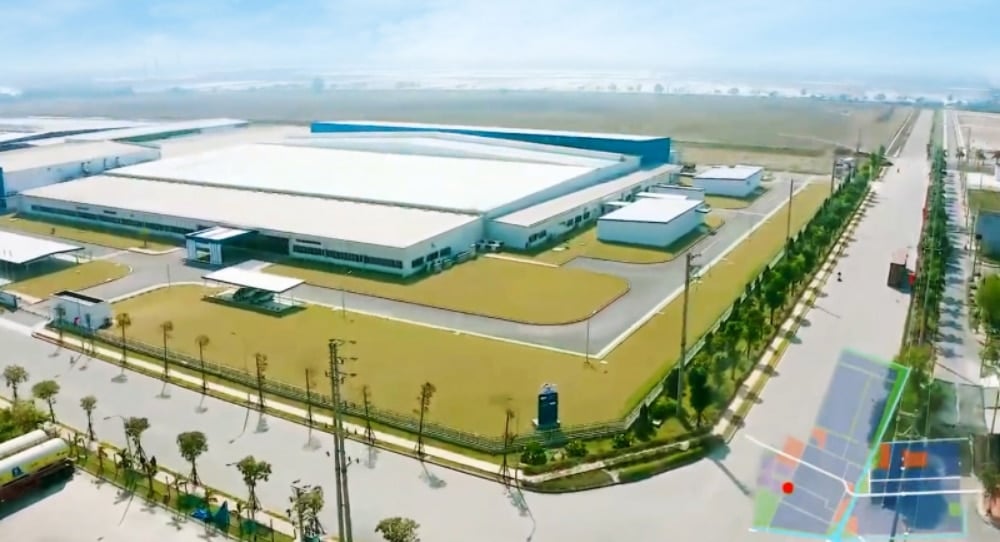 |
| Illustration photo. (Source: Internet) |
Specifically, the Deputy Prime Minister approved the investment policy and approved the project investor, Geleximco Hung Phu Industrial Park Joint Stock Company.
The project is implemented in Nam Hung commune, Tien Hai district, Thai Binh province with a total investment capital of VND 1,939,641 billion, of which the investor's contributed capital is VND 300 billion.
The project's operating period is 50 years from the date the project is approved for investment policy and the investor is approved.
The Deputy Prime Minister assigned the Ministry of Planning and Investment to be responsible for the assigned contents of project investment policy appraisal and to perform state management of industrial parks according to the provisions of the Investment Law and relevant laws.
Relevant ministries and branches are responsible for the content of project investment policy appraisal within their functions and tasks according to the provisions of the Investment Law and relevant laws.
Ensure the accuracy of appraisal contents according to regulations
The People's Committee of Thai Binh province is responsible for ensuring the accuracy of information, reported data, and appraisal contents according to the provisions of law; is responsible for the project's conformity with the planning approved by competent authorities; manages and uses the remaining planned area for the development of Hung Phu industrial park (5.92 ha) according to the provisions of law; assesses the need to use this area to have a plan to adjust and reduce according to the provisions of law on planning, law on industrial park management, law on land and related laws; receives opinions from ministries and branches.
At the same time, inspect and supervise to ensure that the allocation of land use targets is consistent with the approved project implementation progress; comply with the national land use planning and planning targets allocated to Thai Binh province.
Ensure conditions, procedures and processes for land lease, permission to change land use purposes, including rice-growing land for project implementation according to the provisions of law; have plans to supplement land area or increase the efficiency of using other rice-growing land to compensate for converted rice-growing land according to regulations; inspect and supervise the separation and use of topsoil according to the provisions of Clause 4, Article 14 of Decree No. 94/2019/ND-CP dated December 13, 2019 of the Government detailing a number of articles of the Law on Cultivation on plant varieties and cultivation; properly implement regulations on compensation, support and resettlement when the State reclaims land.
Organize the development and implementation of plans for land recovery, compensation, site clearance, conversion of land use purposes, and land lease to implement projects in accordance with documents approved by competent authorities on project area scale, location, and progress; ensure that there are no disputes or complaints regarding the right to use the project site.
Direct relevant agencies and investors to comply with legal regulations on irrigation, dykes, water resources and natural disaster prevention; have construction design plans that ensure no impact on dyke safety and the management and operation of the irrigation system, and the farming capacity of people in the area.
In case there are public assets in the project implementation area, the People's Committee of Thai Binh province shall rearrange and handle public assets in the project implementation area according to the provisions of law on management and use of public assets and other relevant provisions of law, ensuring no loss of state assets.
Land allocation and lease for small, narrow, and interspersed plots of land managed by the State (if any) must meet the criteria prescribed in Clause 1, Article 47 of Decree No. 102/2024/ND-CP dated July 30, 2024 of the Government detailing the implementation of a number of articles of the Land Law.
Implement the commitment to arrange land fund for housing construction, service works and utilities for workers working in Hung Phu Industrial Park according to the approved general urban planning project of Nam Phu, Tien Hai district.
Ensure the location and scale of the project are consistent with the investment policy.
The People's Committee of Thai Binh province directs the Management Board of Economic Zones and Industrial Parks of Thai Binh province and relevant agencies to review and ensure that the project implementation area does not have any tangible cultural heritage works or affect intangible cultural heritage products in Thai Binh province; in accordance with the requirements of protecting and promoting the value of cultural heritage and the conditions prescribed by law on cultural heritage.
Guide, inspect and supervise investors in implementing the construction zoning plan of Hung Phu Industrial Park approved by competent authorities, completing construction procedures in accordance with the provisions of law on construction; ensure the location and area scale of the project are consistent with the project investment policy approved by competent authorities; the land use structure of the project and environmental safety distance comply with national technical regulations on construction planning and other relevant regulations;
Attracting investment projects in industrial parks in accordance with the orientation of focusing on developing industrial production sectors of the Red River Delta region as prescribed in Point b, Clause 1, Article 3 of Resolution No. 81/2023/QH15 dated January 9, 2023 of the National Assembly on the national master plan for the period 2021 - 2030, with a vision to 2050, and the direction of developing industrial parks as prescribed in Point b, Section 3, Part V, Article 1 of Decision No. 368/QD-TTg dated May 4, 2024 of the Prime Minister approving the Planning of the Red River Delta region for the period 2021 - 2030, with a vision to 2050 and the plan for developing the industrial park system as prescribed in Appendix II of Decision No. 1735/QD-TTg dated December 29, 2023 of the Prime Minister approving the Planning of Thai Binh province for the period 2021 - 2030 – 2030, vision to 2050.
Require investors: (i) during project implementation, if there is a construction at a depth below -100m or if minerals with a higher value than minerals used as common construction materials are discovered, they must report to the competent state agency according to the provisions of the law on minerals; (ii) coordinate in compensation, support, resettlement and investment in construction of workers' housing, service works and public utilities for workers working in the industrial park.
Check and determine whether the investor meets the conditions for land lease by the State and changes the land use purpose at the time of land lease; closely monitor the project implementation progress, the use of equity capital as committed to implement the project; the investor's satisfaction of all conditions as prescribed by law on real estate business when conducting industrial park infrastructure business activities and the investor's implementation of commitments to ensure conditions for investment in industrial park infrastructure as prescribed by Decree No. 35/2022/ND-CP.
Investors can only implement the project after meeting all conditions.
Geleximco Hung Phu Industrial Park Joint Stock Company (investor) is responsible before the law for the legality, accuracy and honesty of the contents of the project dossier and documents sent to competent state agencies; complies with the provisions of law in implementing the project according to this Decision; bears all risks and costs and takes full responsibility according to the provisions of Article 47 and Article 48 of the Investment Law in case of violating the provisions of the law on investment and the provisions of the law on land; accepts the opinions of the Ministries, branches and the People's Committee of Thai Binh province.
Use the owner's capital contribution as committed to implement the project and comply with the provisions of the law on land and other relevant provisions of law; fully meet the conditions prescribed by the law on real estate business when conducting industrial park infrastructure business activities; only be allowed to implement the project after fully meeting the conditions prescribed by law, including being permitted by the competent authority to convert the purpose of using rice-growing land and being responsible for paying an amount of money to protect and develop rice-growing land in accordance with the provisions of the law on land.
Comply with the provisions of Article 57 of the Law on Cultivation and Article 14 of Decree No. 94/2019/ND-CP; carry out environmental protection procedures in accordance with the provisions of the law on environmental protection and relevant guiding documents; deposit or have a bank guarantee on the deposit obligation to ensure project implementation in accordance with the provisions of the law on investment...
Investing more than 1,256 billion VND to build infrastructure for Chau Minh - Bac Ly - Huong Lam industrial park
Deputy Prime Minister Tran Hong Ha signed Decision No. 972/QD-TTg dated September 13, 2024 on the investment policy of the project to invest in construction and business of infrastructure of Chau Minh - Bac Ly - Huong Lam industrial park phase 1, Bac Giang province.
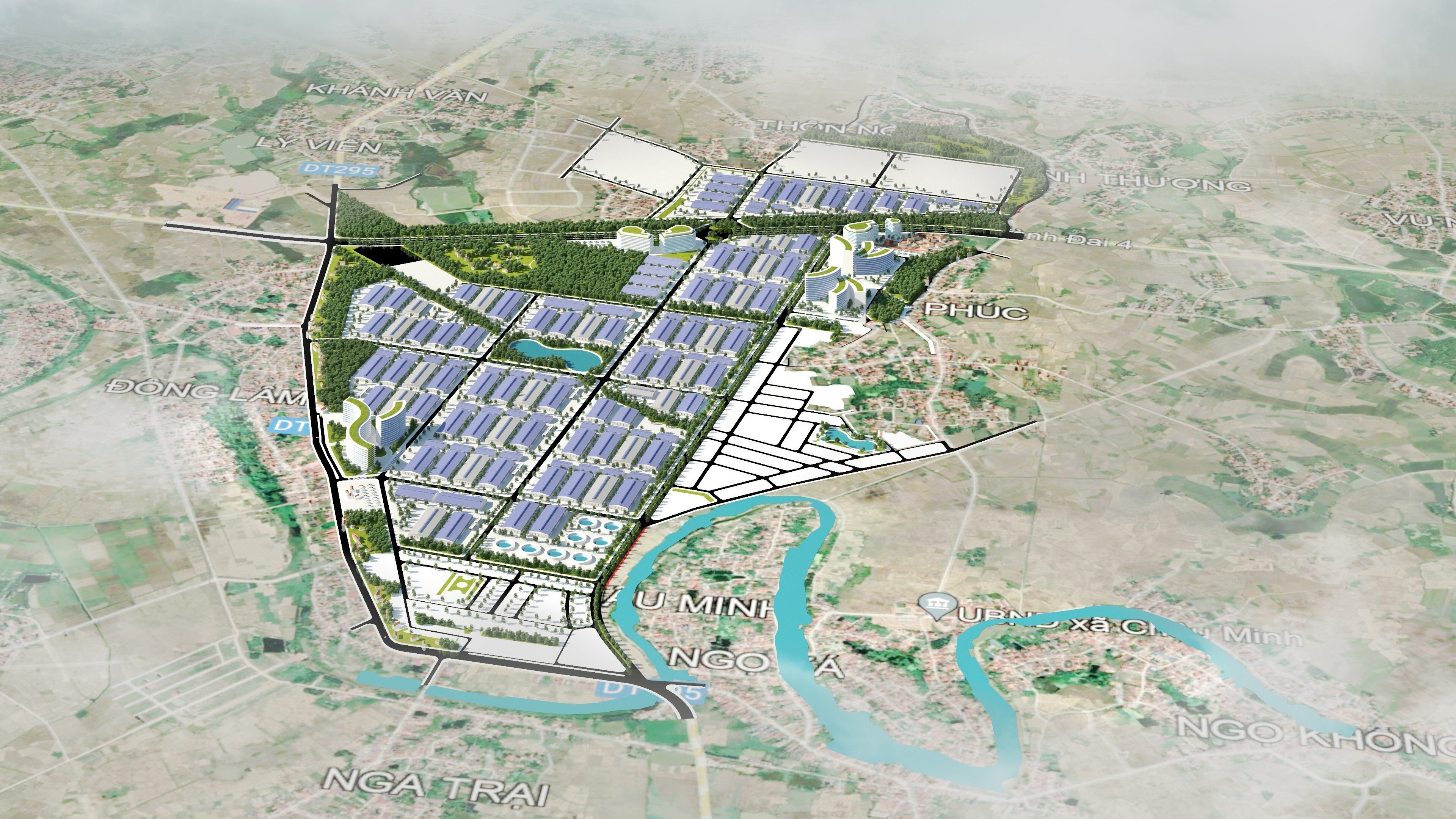 |
| The project area is 105.5 hectares and the total investment capital is more than 1,256 billion VND. Illustration photo. (Source: Internet) |
Investing in construction and business of infrastructure of Chau Minh - Bac Ly - Huong Lam industrial park
Specifically, approving the investment policy and simultaneously approving the investor of the project to invest in construction and business of infrastructure of Chau Minh - Bac Ly - Huong Lam industrial park phase 1, Bac Giang province.
Accordingly, the investor is Hightech Infrastructure Investment and Development Joint Stock Company. The project area is 105.5 hectares. The project location is in Chau Minh commune, Huong Lam, Hiep Hoa district, Bac Giang province. The project investment capital is 1,256.155 billion VND, of which the investor's capital contribution is 190.308 billion VND. The project's operating period is 50 years from the date of land allocation and land lease by the State.
The Deputy Prime Minister assigned the People's Committee of Bac Giang province to direct the Management Board of Industrial Parks of Bac Giang province to specify the project implementation progress in the Investment Registration Certificate, but not exceeding 18 months from the date the investor is allocated or leased land by the State.
The Ministry of Planning and Investment is responsible for the assigned contents of project investment policy appraisal and state management of industrial zones in accordance with the provisions of the law on investment and relevant laws.
Relevant ministries and branches are responsible for the content of project investment policy appraisal within their functions and tasks according to the provisions of the law on investment and relevant laws.
Compensation and site clearance according to regulations
The People's Committee of Bac Giang province is responsible for the truthfulness and accuracy of information, reported data and appraisal contents according to the provisions of law; receives opinions from the Ministries in the dossier approving the project investment policy for the contents within its authority; guides, inspects and supervises to ensure that investors comply with the provisions of law and implement the contents and conditions as prescribed during the project implementation process.
Ensure the allocation of industrial park land quotas for the project in accordance with the approved project implementation progress; synthesize and ensure that the project is included in the land use plan for the period 2021 - 2025, the period 2026 - 2030 of Bac Giang province and the annual land use plan of Hiep Hoa district approved by competent authorities in accordance with the provisions of the law on land.
Organize and implement the tasks of compensation, site clearance and compensation, support and resettlement plans when the State reclaims land in accordance with the provisions of law; carry out land reclaim in accordance with the project implementation progress, minimizing the impact on organizations, individuals and subjects whose land is reclaimed; ensure the legitimate rights and consensus of organizations, individuals and subjects whose land is reclaimed, avoid complaints and lawsuits that affect security and order in the locality; note that housing for resettlement must have a complete technical infrastructure system, social infrastructure and ensure the requirements for housing development in accordance with the provisions of the law on housing.
Prioritize attracting investment projects with modern, environmentally friendly technology.
The People's Committee of Bac Giang province shall inspect and determine the fulfillment of the conditions for land allocation, land lease, and land use purpose conversion by the State before the investor is allocated land to implement the project; resolutely reclaim land from incompetent infrastructure investors that are behind schedule in order to effectively use industrial park land to create a healthy investment environment in Resolution No. 499/NQ-UBTVQH15 dated March 28, 2022 of the National Assembly Standing Committee.
Carry out procedures for land allocation, land lease, and change of land use purpose to implement projects in accordance with the provisions of the law on land; in case of determining that there is public property, handle it in accordance with the provisions of the law on public property, ensuring no loss of state property.
Organize the preparation and approval of the general planning project for the construction of the Chau Minh - Bac Ly - Huong Lam industrial - urban - service park and related subdivision plans according to the provisions of the law on construction, ensuring synchronous connection of technical infrastructure and social infrastructure between subdivisions; manage, supervise and guide investors to implement the project in accordance with the approved general planning projects and subdivision plans for the construction of industrial parks.
Monitor investors' compliance with environmental laws during project implementation; prioritize attracting investment projects with modern, environmentally friendly technology that use little labor and resources; ensure a safe distance between the industrial park and surrounding areas, develop monitoring plans to monitor waste discharge activities in the industrial park, etc.
Implement the project according to the committed schedule
The investor is Hightech Infrastructure Investment and Development Joint Stock Company, which is responsible before the law for the legality, accuracy and honesty of the contents of the project dossier and documents sent to competent state agencies; bears full responsibility and related risks and costs in case of violation of the provisions of the law on investment and the provisions of the law on land as prescribed in Article 47 and Article 48 of the Investment Law; accepts the opinions of the Ministries and the People's Committee of Bac Giang province in the dossier approving the project investment policy.
The project shall only be implemented after the conversion of the purpose of using rice-growing land to implement the project has been approved by competent authorities in accordance with the provisions of the law on land and the law on management and use of rice-growing land; pay an amount of money for the State to supplement the lost area of land dedicated to rice cultivation or increase the efficiency of using rice-growing land in accordance with the provisions of Point b, Clause 4, Article 182 of the Land Law No. 31/2024/QH15; comply with the provisions of Article 57 of the Law on Cultivation and Article 14 of Decree No. 94/2019/ND-CP dated December 13, 2019 of the Government detailing a number of articles of the Law on Cultivation regarding plant varieties and cultivation.
Fully implement environmental procedures, including environmental impact assessment according to regulations of law on environmental protection; comply with regulations of law on irrigation and law on water resources during project implementation.
The investor contributes sufficient equity capital to implement the project according to the committed schedule, ensuring compliance with the conditions of the law on real estate business and the law on land; specifies the loan plan by credit contract; deposits or must have a bank guarantee for the deposit obligation to implement the project...







![[Photo] Closing ceremony of the 18th Congress of Hanoi Party Committee](https://vphoto.vietnam.vn/thumb/1200x675/vietnam/resource/IMAGE/2025/10/17/1760704850107_ndo_br_1-jpg.webp)
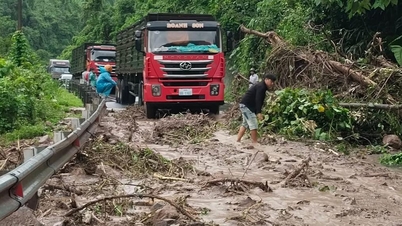



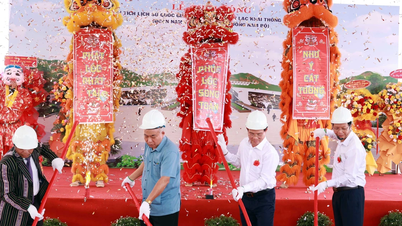







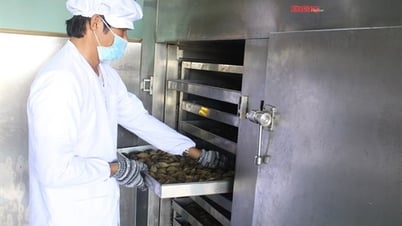





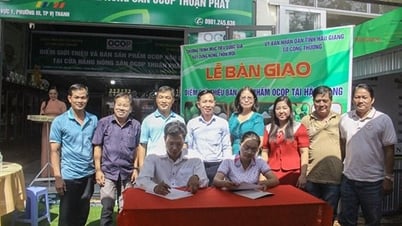





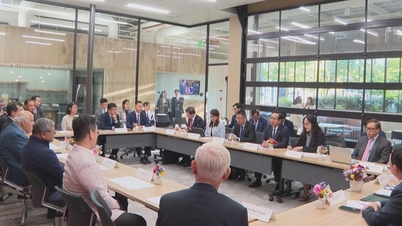
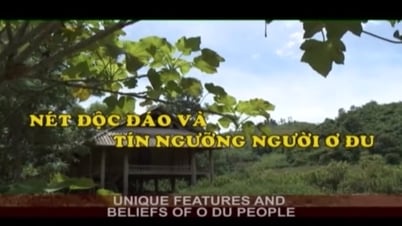

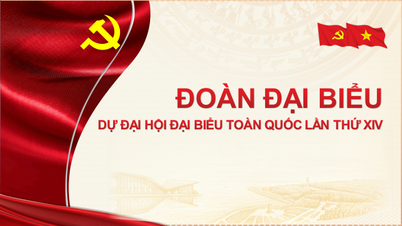

![[Photo] Nhan Dan Newspaper launches “Fatherland in the Heart: The Concert Film”](https://vphoto.vietnam.vn/thumb/1200x675/vietnam/resource/IMAGE/2025/10/16/1760622132545_thiet-ke-chua-co-ten-36-png.webp)


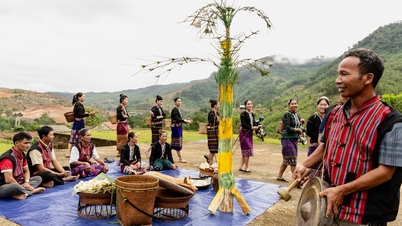



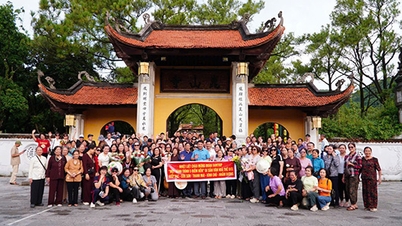
















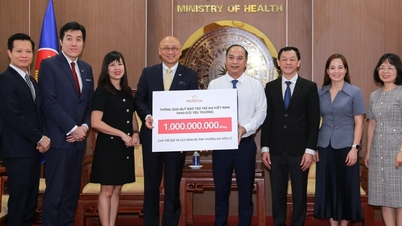
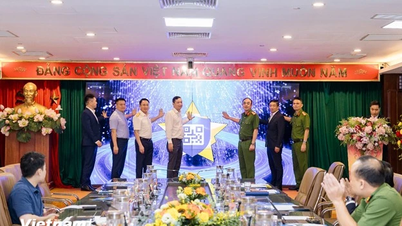
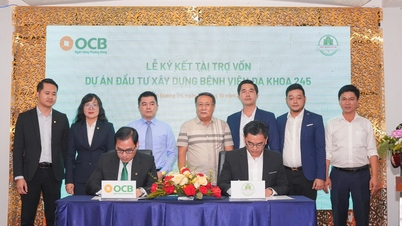
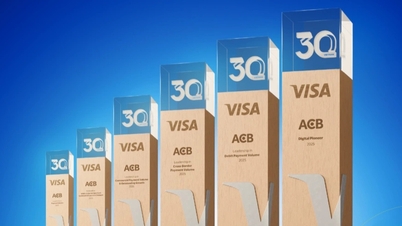






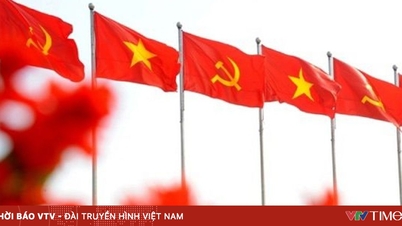

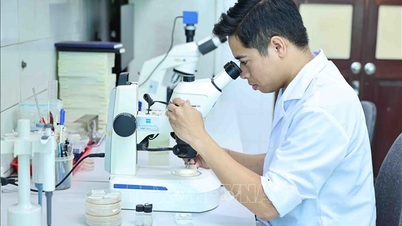
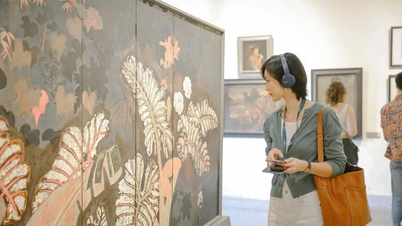
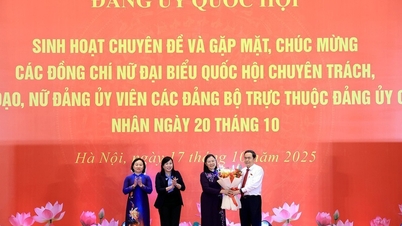

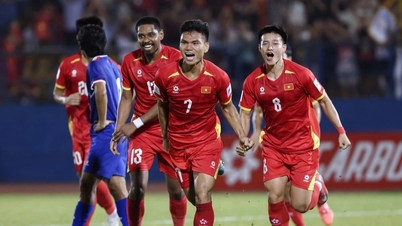


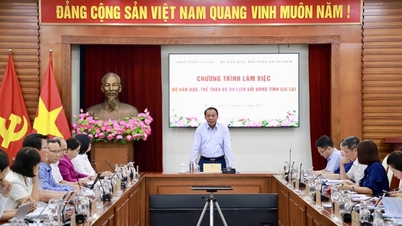
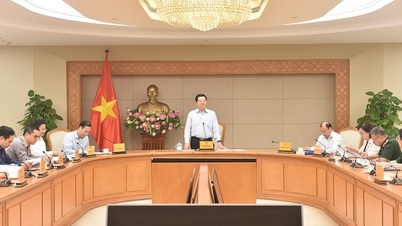
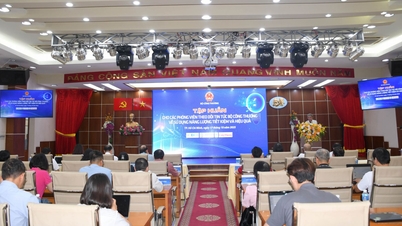

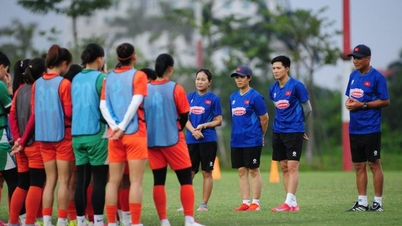
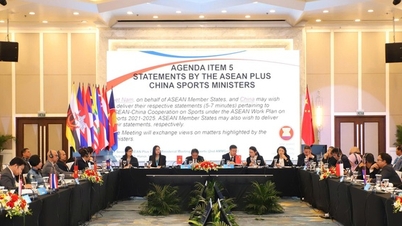
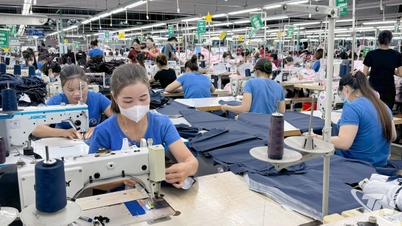

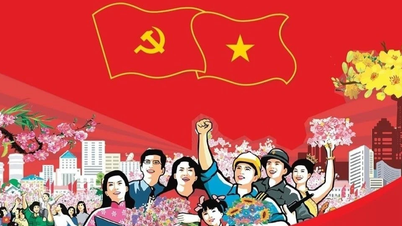
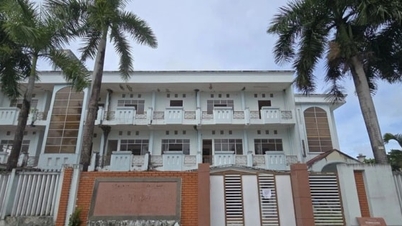



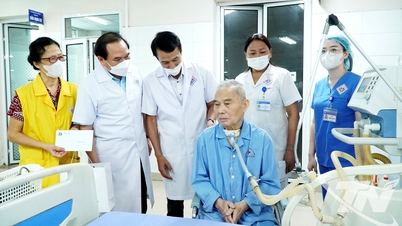
















Comment (0)